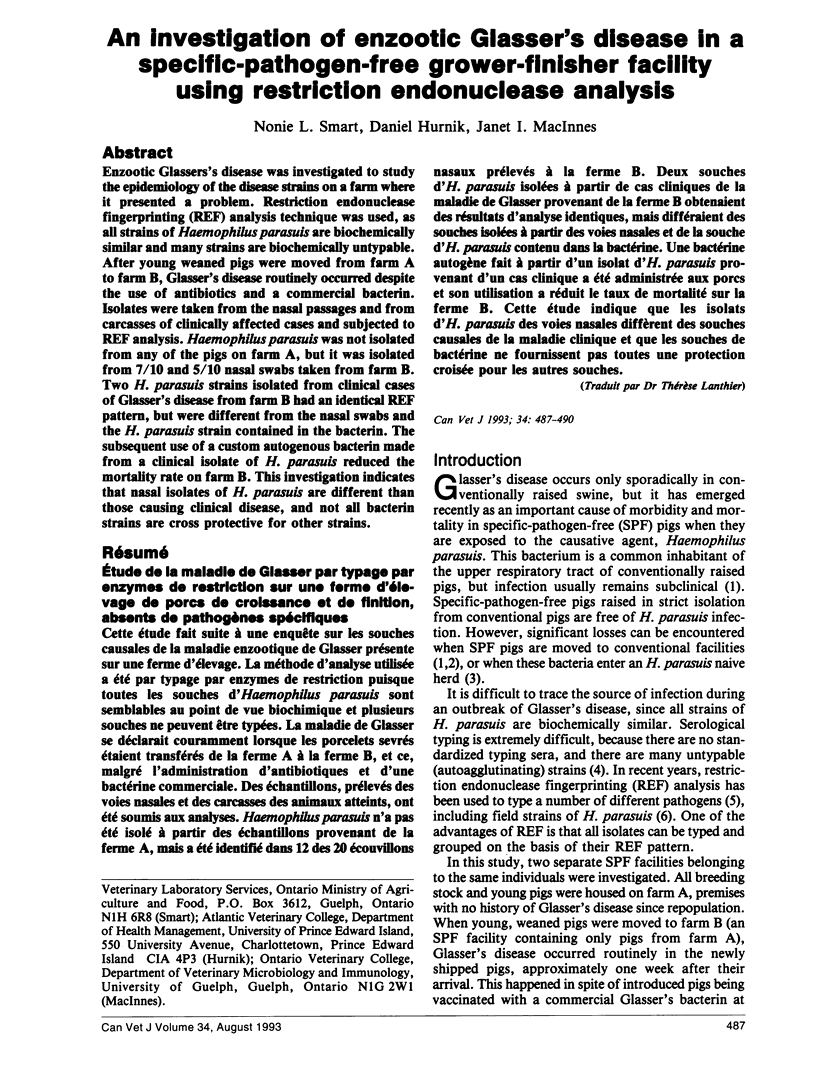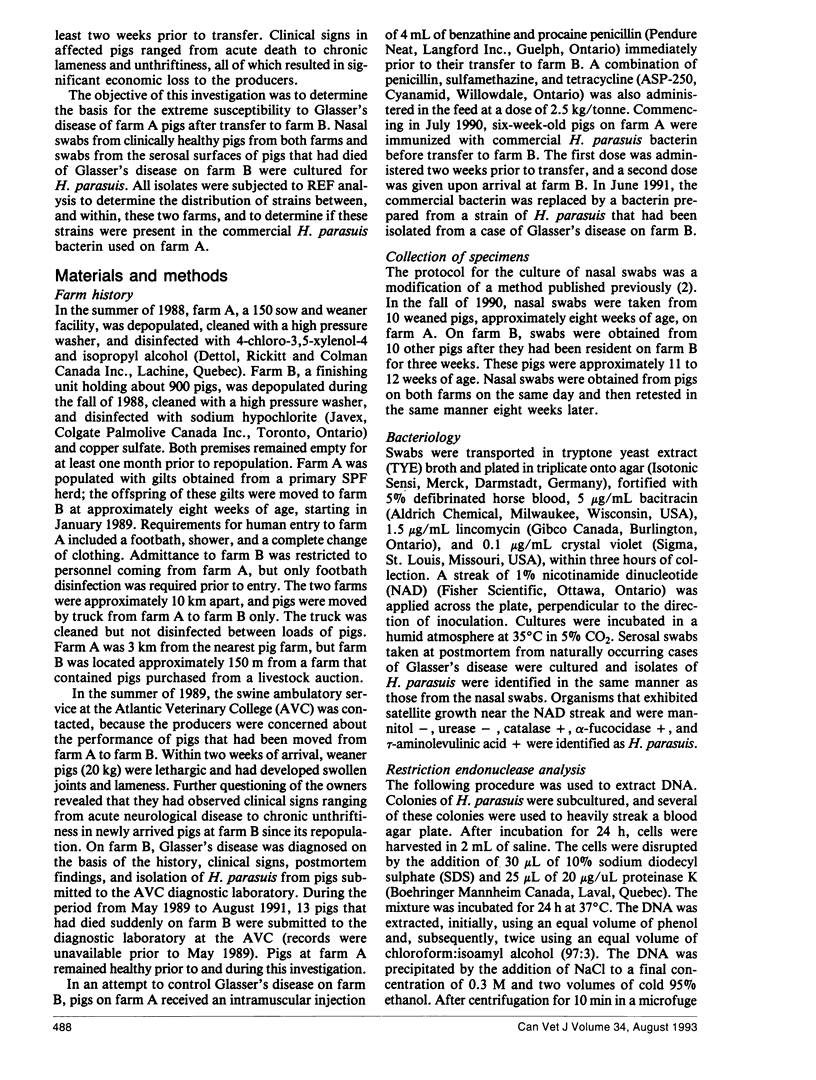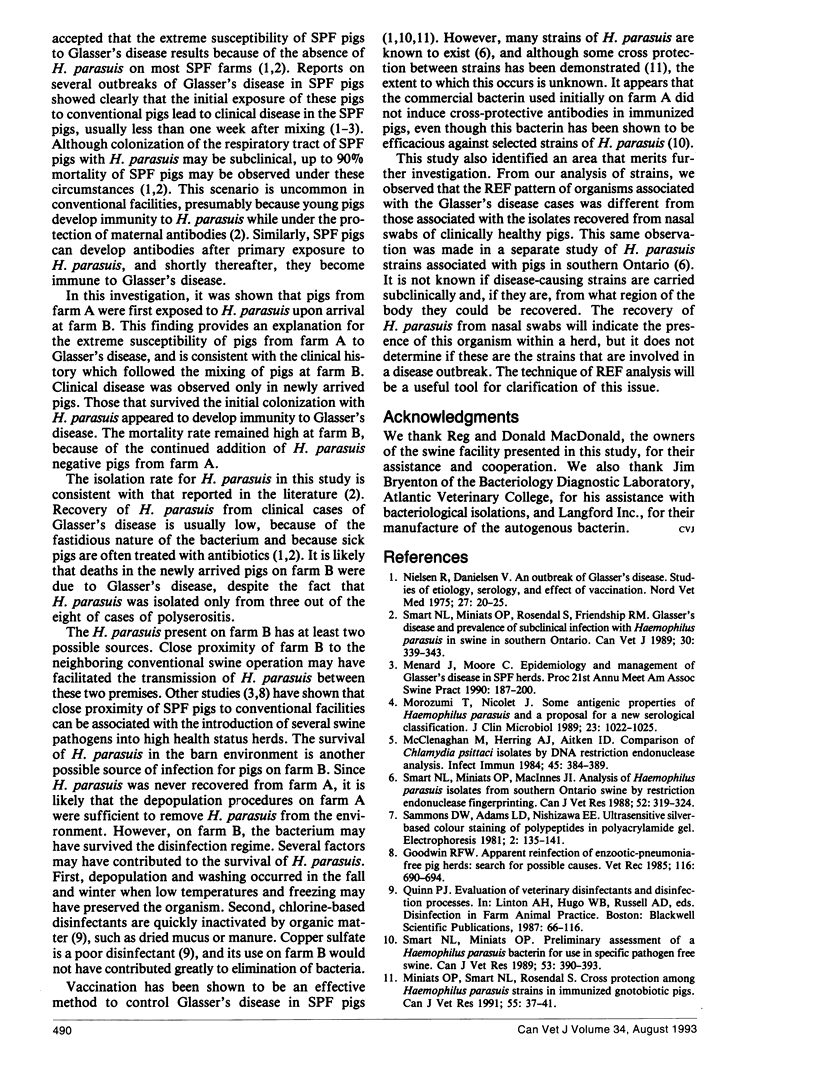Abstract
Enzootic Glassers's disease was investigated to study the epidemiology of the disease strains on a farm where it presented a problem. Restriction endonuclease fingerprinting (REF) analysis technique was used, as all strains of Haemophilus parasuis are biochemically similar and many strains are biochemically untypable. After young weaned pigs were moved from farm A to farm B, Glasser's disease routinely occurred despite the use of antibiotics and a commercial bacterin. Isolates were taken from the nasal passages and from carcasses of clinically affected cases and subjected to REF analysis. Haemophilus parasuis was not isolated from any of the pigs on farm A, but it was isolated from 7/10 and 5/10 nasal swabs taken from farm B. Two H. parasuis strains isolated from clinical cases of Glasser's disease from farm B had an identical REF pattern, but were different from the nasal swabs and the H. parasuis strain contained in the bacterin. The subsequent use of a custom autogenous bacterin made from a clinical isolate of H. parasuis reduced the mortality rate on farm B. This investigation indicates that nasal isolates of H. parasuis are different than those causing clinical disease, and not all bacterin strains are cross protective for other strains.
Full text
PDF



Images in this article
Selected References
These references are in PubMed. This may not be the complete list of references from this article.
- Goodwin R. F. Apparent reinfection of enzootic-pneumonia-free pig herds: search for possible causes. Vet Rec. 1985 Jun 29;116(26):690–694. doi: 10.1136/vr.116.26.690. [DOI] [PubMed] [Google Scholar]
- McClenaghan M., Herring A. J., Aitken I. D. Comparison of Chlamydia psittaci isolates by DNA restriction endonuclease analysis. Infect Immun. 1984 Aug;45(2):384–389. doi: 10.1128/iai.45.2.384-389.1984. [DOI] [PMC free article] [PubMed] [Google Scholar]
- Miniats O. P., Smart N. L., Rosendal S. Cross protection among Haemophilus parasuis strains in immunized gnotobiotic pigs. Can J Vet Res. 1991 Jan;55(1):37–41. [PMC free article] [PubMed] [Google Scholar]
- Morozumi T., Nicolet J. Some antigenic properties of Haemophilus parasuis and a proposal for serological classification. J Clin Microbiol. 1986 Jun;23(6):1022–1025. doi: 10.1128/jcm.23.6.1022-1025.1986. [DOI] [PMC free article] [PubMed] [Google Scholar]
- Nielsen R., Danielsen V. An outbreak of Glässer's disease. Studies on etiology, serology and the effect of vaccination. Nord Vet Med. 1975 Jan;27(1):20–25. [PubMed] [Google Scholar]
- Smart N. L., Miniats O. P., MacInnes J. I. Analysis of Haemophilus parasuis isolates from southern Ontario swine by restriction endonuclease fingerprinting. Can J Vet Res. 1988 Jul;52(3):319–324. [PMC free article] [PubMed] [Google Scholar]
- Smart N. L., Miniats O. P. Preliminary assessment of a Haemophilus parasuis bacterin for use in specific pathogen free swine. Can J Vet Res. 1989 Oct;53(4):390–393. [PMC free article] [PubMed] [Google Scholar]
- Smart N. L., Miniats O. P., Rosendal S., Friendship R. M. Glasser's disease and prevalence of subclinical infection with Haemophilus parasuis in swine in southern Ontario. Can Vet J. 1989 Apr;30(4):339–343. [PMC free article] [PubMed] [Google Scholar]





